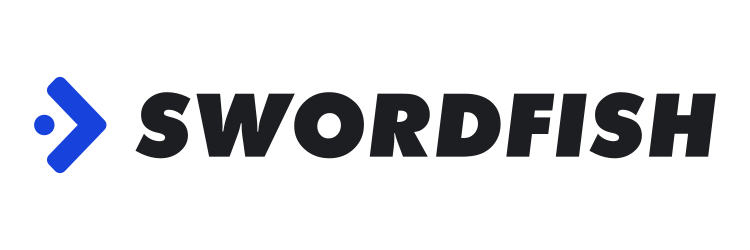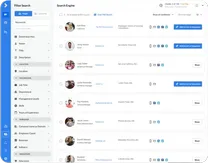
Ever had a great meeting and wondered what’s next? That’s where a “follow-up email after a meeting” comes in. It’s a simple yet powerful tool to keep the conversation going.
A follow-up email is more than just a reminder. It shows you’re proactive, value the discussion, and are keen to move things forward. Why is it so important? It helps clarify any doubts, summarizes key points, and sets the stage for future actions.
In this guide, we’ll break down how to write a follow up email after a meeting to make sure your meetings always lead to clear next steps.
Why are Follow-Up Emails Important?

Here are the reasons why follow-up emails important —
1. Seamless Integration into Professional Routines
Follow-up emails naturally fit into a professional’s day. They’re less disruptive than phone calls and can be read and responded to when it suits the recipient best. In fact, based on the information of Belkins, the initial follow-up email increases responses by 49%.
2. An Expression of Gratitude
By sending a follow-up email, you convey gratitude for the recipient’s time and insights. To enhance its impact:
- Address the recipient by name.
- Specify the reason for your gratitude. Instead of a generic “Thanks for your time,” acknowledge them for their unique contribution during the meeting.
- Highlight a particular topic or detail discussed during the meeting.
3. Keeping the Dialogue Active
In roles like sales or when seeking guidance, a follow-up email helps keep the discussion going. It’s a smart way to remain top-of-mind for the recipient, paving the way for more talks or partnerships.
4. Establishing Yourself as a Valuable Resource
Follow-up emails can strengthen your reputation as a reliable source of information. By sharing relevant articles, case studies, or other content, you underscore your commitment to adding value.
For instance, if AI is a topic of discussion, sharing a recent article on chatbot effectiveness can be a great touchpoint.
Remember, over 90% of consumers believe online content influences their purchasing decisions.
5. Personal Touches Matter
While the primary focus of follow-up emails is professional, adding a personal touch can strengthen the bond. If a mutual interest, like football, was discussed, sharing a related article (while ensuring it’s professional) can be a delightful addition.
Best Practices of Follow Up Email
You can make your follow-up email effective and well-received with the right practices. But before sending your follow-up email, it’s crucial to have the correct contact details.
You can try Swordfish AI which can be invaluable here. With its expansive database of over 3.5 billion data profiles, Swordfish AI provides verified email addresses for better follow-up.
That being said, we’ve put together a simplified and informative guide on how to write follow-up emails after a meeting —

1. Start with a Familiar Introduction
Begin your email by briefly reminding the recipient of who you are and how you met. This ensures they don’t waste time figuring out the context.
For instance, if you had a follow up email after the business meeting sample, you could mention the main topic of that meeting.
2. Show Your Appreciation
Meetings can be time-consuming, often pulling people away from other pressing tasks. It’s essential to acknowledge this by expressing your gratitude for their time and participation.
Even if you’ve thanked them in person, a written acknowledgment goes a long way.
3. Provide a Meeting Recap
To ensure everyone has the key points from the meeting, include a concise summary in your email. This should cover:
- Main discussion topics
- Decisions made
- Task assignments and their respective owners
- Reference materials used during the meeting
- Any clarifications or answers to issues raised
Sending this recap, especially if it’s a follow up email after a conversation with employee, ensures everyone is aligned and informed. If you are struggling to cover all these details in the form of a concise summary, then get some help from AI text summarizer tools. It will automatically make your email short by removing all the unnecessary details. Sending this recap, especially if it’s a follow up email after a conversation with employee, ensures everyone is aligned and informed.
4. Highlight the Next Steps
Clearly outline the subsequent actions to be taken. This not only serves as a reminder but also ensures everyone is accountable for their tasks.
If there were individuals who couldn’t attend the meeting, this section will update them on their roles and responsibilities.
5. Keep It Short
Your email should be a gentle nudge, not an information overload. Start by mentioning any previous interactions, like a call or an emailed proposal.
Highlight any pending requests or details and check if they need further information.
The aim is to be clear about the next steps for both parties. It particularly helps maintain clarity for effective cold emails. Avoid lengthy or overly formal language; keep the message focused and easy to skim.
6. Time It Right
The effectiveness of your email can be influenced by when you send it. Ideally, for business interactions, send your follow-up within 24 hours.
However, in situations like after a job interview, give it a week or two. If you’re merely touching base with a contact, a follow up email every three months is appropriate.
7. Add a Personal Touch
Steer clear of generic mass emails. Personalize your message by mentioning specific details about the recipient, such as their name, company, or role.
For instance, “Hi [name], given your role as Director of [company], I understand you might be busy with [initiative]…” This approach not only shows genuine interest but also helps in building a stronger connection.
How to Write a Follow-Up Email in 6 Simple Steps
Creating an effective follow-up email is essential for maintaining engagement and ensuring your message gets the desired response. Here’s a concise guide on how to write a follow up email after a team meeting that strikes the right chord —

1. Begin with a Personal Touch
Start your email with a personalized greeting. Whether you opt for a casual “Hey John” or a more formal “Dear [name]”, using the recipient’s name sets a friendly tone and grabs their attention. Immediately after, provide context by referencing your last interaction.
For instance, “I appreciated our conversation last week regarding [topic]” or “Following up on last month’s email exchange regarding [topic]”. This brief recap helps jog their memory about your previous conversation.
2. Clearly State Your Purpose
After setting the context, dive straight into the reason for your email. Be specific about why you’re reconnecting. Examples include:
- “Checking if you’ve reviewed the proposal I sent?”
- “Confirming our meeting for next Tuesday at 2 PM?”
- “Seeking updates on my job application?”
Being direct and clear about your intentions makes it easier for the recipient to respond.
3. Share Relevant Information and Suggest Next Steps
Combine new details or re-emphasize crucial points from your previous conversation.
This could involve requesting a product demo meeting, seeking feedback, or asking for further discussions. Immediately after, provide a clear call to action (CTA) to guide the recipient on the desired next steps.
For instance, “Would you mind scheduling a call to see our platform? Is that okay?” This approach keeps the conversation flowing and encourages a response.
4. Express Gratitude
Always show appreciation for the recipient’s time and consideration. Simple phrases like “Thank you for your time” or “I appreciate your consideration” can go a long way in fostering goodwill.
Concluding your email on a positive note, such as “Looking forward to your feedback” or “Hope you have a great week ahead”, leaves a lasting impression.
5. Proofread and Polish
Before hitting send, take a few minutes to review your email. Check for typos and grammatical errors, and ensure the content flows well.
Reading the email aloud can help catch awkward phrasings. Also, double-check the recipient’s details and right subject line for your follow-up emails for accuracy.
6. Send with Confidence
Once you’re satisfied with the content and have ensured all details are accurate, confidently send your email. Remember, a well-written follow-up can make all the difference in achieving your desired outcome.
Costly Mistakes to Avoid with Follow-Up Emails
Follow-up emails are essential for maintaining engagement and ensuring your message gets the desired response. One mistake can cost you heavily, especially if you’re asking for availability correctly. Some of the major ones are —
- Not Prioritizing Follow-Ups: Often, we start with the intention of sending follow-up emails but get distracted by sudden challenges. It’s crucial to prioritize these emails, ensuring they don’t fall by the wayside.
- Staying Consistent Despite Hurdles: Unexpected challenges often pop up, diverting our focus. But it’s crucial not to let these setbacks delay your follow-up emails. Make it a point to get back on track and send those messages, even if slightly delayed.
- Forgetting the Importance of Consistency: Sending a follow-up email isn’t just a one-time task. It should become a consistent habit. You might consider setting reminders or allocating specific times in your schedule for crafting and sending these emails.
Follow-Up Email After Meeting: Key Rules for Success
Let’s talk about the key principles that make post-meeting emails work.
1. Define Your Objective
Every email should have a clear purpose. Whether you’re expressing gratitude, discussing next steps, seeking feedback, or asking for an introduction, it’s essential to know what you aim to achieve.
If you’re uncertain about the email’s intent, it might be best to reconsider sending it.
2. Personalize and Be Genuine
Avoid generic templates. Instead, tailor your message to the individual, showing genuine interest and care. Reference specific topics discussed during the meeting or highlight shared interests. This personal touch ensures the recipient feels valued and understood.
3. Be Concise
Respect the recipient’s time by being direct and to the point. Eliminate unnecessary introductions, repetitions, and irrelevant details. A brief email is more likely to be read and acted upon.
4. Timeliness is Key
It’s crucial to send your follow-up email within 24 hours of the meeting. It ensures you remain fresh in the recipient’s memory and increases the likelihood of a positive response.
Top 5 Follow Up Email Templates for Effective Follow-Ups

Below are a few templates that’ll show you what to say in a follow-up email after a meeting that’s both impactful and well-received:
1. Follow Up Email After Meeting A Potential Customer
In your follow-up, highlight how you can address the client’s challenges and why partnering with you would be beneficial. Sharing success stories of similar clients can be a compelling way to showcase your expertise.
Subject: Exploring Opportunities: How We Can Support [Company Name]’s Growth
Hi [Name],
It was truly enlightening meeting you and gaining insights into [Company name]’s remarkable journey from a startup to a 200-strong team in just a year.
Understanding your aspirations to tap into the Chinese market, I’d like to draw your attention to a success story of one of our clients. They experienced a 200% surge in their user base in China within a short span: [link]. Noticing the parallels between their objectives and yours, I’m confident our expertise in app localization and advanced ASO strategies can be instrumental for [Company name].
Would it be possible to schedule a brief call to delve deeper into how we can collaborate effectively?
Warm regards, [Your name]
2. Follow Up Email After Networking With A Potential Partner
After a brief introductory conversation at a networking event, it’s essential to nurture the relationship and explore potential collaboration opportunities. A well-crafted follow-up can pave the way for a fruitful business partnership.
Subject: Exploring Collaborative Opportunities with [Recipient’s Company]
Hi [Name],
I truly valued our conversation at the recent event. Your insights into [Topic] and the vision for [Recipient’s Company] were enlightening.
Given our shared interests and objectives, I believe there’s potential for a synergistic collaboration between our teams. I’ve discussed the idea with my team, and we’re excited about the prospect of joining forces on some initiatives.
Here are a few projects we believe could benefit from our combined expertise:
[Project 1]
[Project 2]
[Project 3]
I’d love to check more into how we can align our efforts. Could we schedule a time to discuss this further?
Warm regards,
[Your name]
3. Following Up Email After a Team Meeting
Subject: Recap and Next Steps from Today’s Meeting
Dear Team,
Thank you for dedicating your time and effort during today’s meeting. Your commitment to [company name] is truly commendable.
To ensure we’re all aligned, here’s a brief overview of the primary decisions we arrived at:
[Decision 1]
[Decision 2]
[Decision 3]
Additionally, here are the action items we need to prioritize, along with the respective team members assigned:
[Action Item 1] – [Assigned Team Member]
[Action Item 2] – [Assigned Team Member]
[Action Item 3] – [Assigned Team Member]
For further clarity, I’ve attached the documents we referenced during our discussion.
Let’s reconvene on [date of next meeting] for our subsequent team gathering. Wishing you a productive week ahead.
Best regards,
[Your Name]
4. Follow Up Email To Schedule Another Meeting
Subject: Continuing Our Discussion on [Topic]
Hi [Name],
I truly valued our conversation on [date of last meeting] about [topic of last meeting]. Your insights and dedication to the subject were evident, and I’m eager to delve deeper into our discussion.
Considering your packed schedule, I wanted to propose a follow-up meeting to further explore [topic]. If you could [share your availability or use this link to pick a suitable time], that would be fantastic.
Looking forward to our continued collaboration.
Warm regards,
[Your Name]
5. Following Up After A Business Meeting
Subject: Exploring Collaborative Opportunities
Hello [Name],
Thank you for the insightful discussion we had recently. Your insights into your role and the commendable initiatives by your organization were truly enlightening.
I’m excited about the potential of collaborating with you and your team, especially considering the shared objectives we touched upon. Here are a few projects that we believe could greatly benefit from our combined efforts:
[Project 1]
[Project 2]
[Project 3]
Would you be open to organizing a joint session with both our teams to delve deeper into the specifics of our potential collaboration? Your feedback and guidance would be invaluable.
Thank you for your time and consideration.
Warm regards,
[Your Name]
Conclusion
Writing a follow-up email after a meeting is crucial for maintaining professional relationships and ensuring that important points discussed are acted upon.
It’s not just about sending a message; it’s about recapping the conversation, setting the stage for future interactions, and showing your commitment.
When you understand how to write a follow-up email after a meeting, you’re taking a proactive step in keeping communication lines open and clear.
This simple gesture can make a significant difference in your professional journey, ensuring that no opportunity or detail slips through the cracks.
Remember, it’s the small steps like these that often lead to bigger opportunities.
Frequently Asked Questions
How can I make a lasting impression with my follow-up email?
First impressions matter, but so do second impressions. After having an excellent meeting, writing a great follow-up email can solidify your relationship and ensure further collaboration.
What should I consider when writing the subject line of my follow-up email?
The subject line should be attention-grabbing and relevant to the content of the email. It should give the recipient a clear idea of the email’s purpose.
Are there templates available for writing follow-up emails?
Yes, there are various templates available online that cater to different scenarios, such as sales, interviews, and customer interactions. These templates can help standardize the process and ensure effective communication
What should I do if I don’t receive a response to my follow-up email?
If there’s no response, consider sending another follow-up email. Ensure that your message is concise, polite, and reiterates the importance of the discussed topics or any pending actions.
How can I ensure that my follow-up email stands out in the recipient’s inbox?
Write a compelling subject line, provide context at the beginning of the email, and clearly state your purpose. Being direct, concise, and relevant can increase the chances of your email being noticed and acted upon.
Check Our Latest Blogs
- Best Alternatives to ZoomInfo
- Linkedin Sales Navigator Plans
- Best Alternatives to UpLead
- SignalHire Plans
- Best Alternatives to AeroLeads
- People Data Labs Plans
- SeekOut Plans
- Cognism Plans
- Find Email Address By Phone Number
- hireEZ Pricing Plans
- Review Pipl’s Pricing Packages
- Our SignalHire Analysis
- Alternative Solutions to Replace hireEZ
- Alternative Solutions to Replace SeekOut


 View Products
View Products




